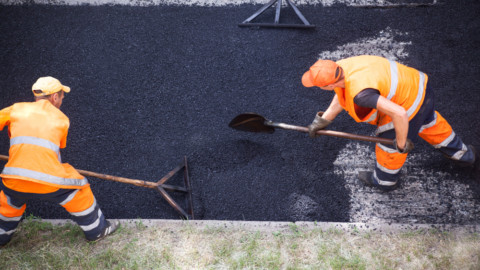The iMOVE Cooperative Research Centre (CRC) is taking significant steps forward in the development of Mobility as a Service (MaaS) in Australia to improve the movement of both people and freight. iMOVE Managing Director, Ian Christensen, discusses some of the mobility projects and research the centre is doing, the opportunities and challenges, and how iMOVE will continue to support the implementation of a successful MaaS approach.
iMOVE CRC’s primary objective is to improve the mobility of people and freight through better use of data. It supports companies and organisations that want to invest in Australia’s transport future through the development of new products and services.
Managing Director of iMOVE Australia, Ian Christensen, said, “We work with our industry partners to identify objectives within the general scope of smart mobility.
“For the purposes of discussion, we separate our research into three streams — infrastructure, people and freight — however these are all strongly interrelated and many projects fall across at least two of them, although each area has its own particular challenges.
“iMOVE wants to facilitate projects that deliver tangible outcomes to industry participants. We achieve this by identifying problems and opportunities that matter to industry organisations.”
For each industry-identified opportunity, iMOVE assembles partners with the skills and capabilities needed to deliver the project. This not only includes corporations but also entities such as government departments, and road and transport authorities.
With this in mind, iMOVE, together with Intelligent Transport Systems Australia (ITS Australia), is undertaking a project to better understand what Mobility as a Service could mean for Australia.
Exploring mobility as a service
ITS Australia, through the iMOVE CRC, is partnering with the Institute for Choice (University of South Australia), and leading transport stakeholders — Transport for Victoria, Transport for NSW, Translink, Department of Transport WA and Royal Automobile Association SA — to develop a MaaS consumer research report asking the questions: What does MaaS mean for Australia, and what do Australians think?
“There’s a level of debate over the definition of ‘MaaS’ but for our purposes we can define it as integration of multiple modes of transport into a single, intermodal travel service, accessible on demand. This includes all modes of public transport as well as car share, bike hire, taxis and Uber. A key aspect is the placing of users at the centre of the mobility options,” Mr Christensen said.
“The main benefits of an integrated MaaS system are easier mobility for individual travellers and better distribution of demand across all infrastructure, leading to a range of transportation improvements – in speed, reliability and cost.
“It also reduces the need for car ownership, thus providing a range of benefits, including potentially: reduced congestion, reduced need for parking facilities and reduced need for people to fund large capital outlays on car purchases.”
The overarching goal of this project is to find out where Australia is placed locally and globally with MaaS. It aims to find out what people think through analysing existing research, determining Australian expectations in this area and finally, identify opportunities for Australia.
The project will result in the publication of a report that will lead the discussion around MaaS in Australia and go to a variety of high profile decision-makers such as ministers and industry leaders. Ultimately it will help develop transport systems that work in the Australian context and also take advantage of the opportunity to produce and deploy new transport services.
Through this and other research, iMOVE has identified some key challenges when it comes to integrating MaaS in Australia.
“A MaaS approach requires reliable availability of real-time data – particularly from transport vehicles,” Mr Christensen said.
“There are also needs for journey planning algorithms that organise each journey, and transaction mechanisms behind the scenes by which the travellers’ payments get distributed to transport operators.
“Different cities are at different stages along this path, with the leading cities having already established effective data sharing regimes. Some of them have made good progress in working out how to distribute traveller revenue across operators. However, no one has yet established a fully integrated ‘travel wallet’.”
Using freight data to improve supply chains
Australia’s standard of living depends crucially on the smooth and efficient flow of goods into and out of the country, and into the hands of Australian consumers wherever they are located. However, some of the technology and information flow in Australia’s supply chains lack visibility and have poor ability to predict arrival times. This causes massive inefficiencies in the supply chain nationally.
“iMOVE wants to help the freight sector lift its game in this area and we’ve already found companies keen to be involved in projects,” Mr Christensen said.
“We are excited by the results of a 2016 ALC/Austroads trial that demonstrated the benefits of establishing visibility over product movement along a single supply chain.
“Based on this, we want to develop and implement a more general system that will, in response to a unique freight identifier, give the position and status of that item of freight regardless of which party has current carriage or control.
“Noting the industry’s concern about data integrity and confidentiality the new system will avoid aggregating all data into a single repository and access to data will be limited to those with authority to see it.”
The project will include a strong focus on policy, process and data structures, as well as the development of on-ground infrastructure to demonstrate the effective operation of the system. iMOVE also has an ongoing project in Western Australia looking at intermodal logistics planning for key ports and associated road and rail infrastructure.
“This kind of longer-term planning is invaluable for the efficiency of our supply chains and supports our ability to export Australian goods. Another project is looking at fleet network optimisation, again to improve efficiency,” Mr Christensen said.
“We expect to see even more activity over the coming years in this area, especially given the explosion in demand for freight services due to population growth and online shopping.
“This is placing heavy stresses on our freight systems and challenges us to find new ways to operate, including how to better integrate road and rail transport and how to better deliver the ‘last mile’ freight task.”
Leading Australia’s mobility future
Australia is currently facing challenges to accommodate our rapidly growing freight task and the distribution of manufactured goods.
To cope with these pressures, iMOVE anticipates that a combination of supply side and demand side initiatives will be needed.
“This includes increased physical infrastructure — more roads etc. — as well as technology to operate them at higher capacity,” Mr Christensen said.
“On the demand side of the balance, we look to encourage people to spread their travel over wider range of modes and times, and to facilitate the movement of freight through the network outside of the morning and evening peak hour.
“We need to be alert to the need to establish real-time electronic visibility over vehicles and people moving through infrastructure systems and look for opportunities to use this newly available data to improve the performance of efficiency of infrastructure assets.”
To do this, iMOVE looks to use technologies and processes such as automatically reporting the GPS positions of public transport vehicles and the development of journey planning algorithms that an build journeys across multiple modes of transport.
“As well as developing technologies, we also need to recognise the human aspects. We need to understand the strength of traveller preferences and tolerances for characteristics such as reliability, cost, overcrowding and safety,” Mr Christensen said.
Mr Christensen said we can prepare the pathway for mobility in the future by improving the availability of data from all transport modes and working out how to deliver on-demand services. Having clarity around the relative costs of different infrastructure support for each transport mode will shed light on the viability of mobility projects in Australia.
Find out more about iMOVE activities at imovecrc.com
















